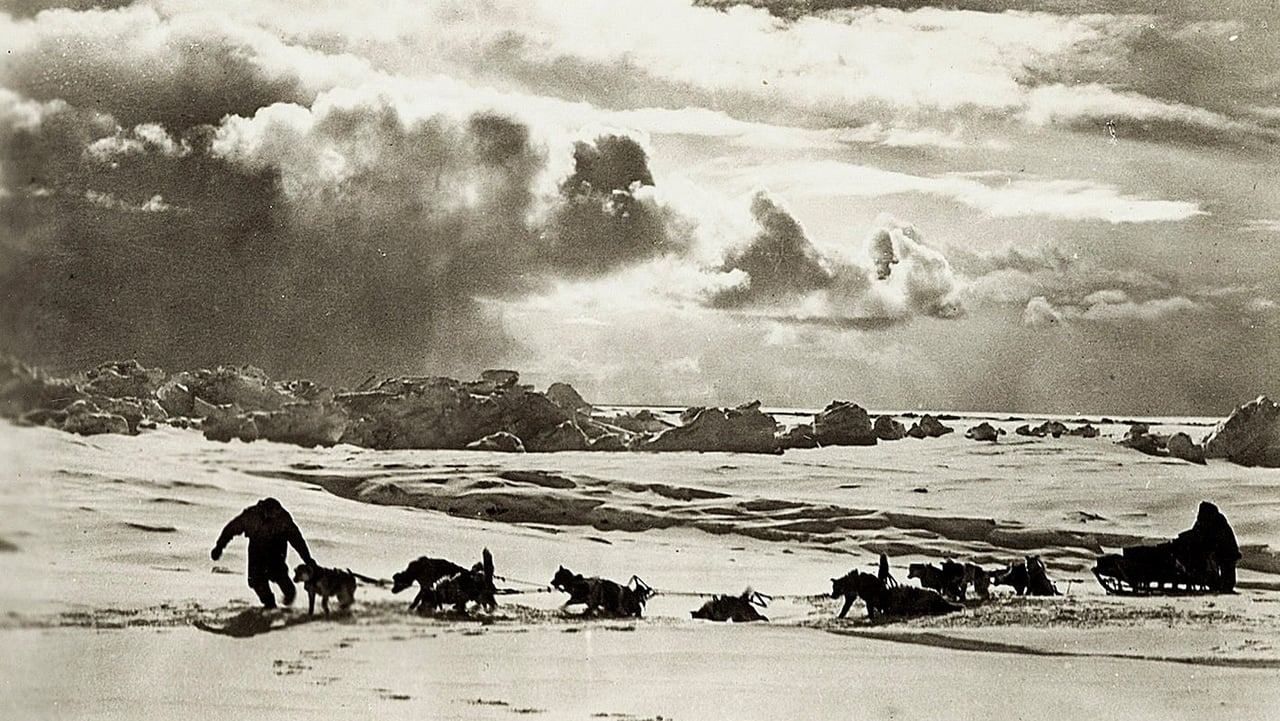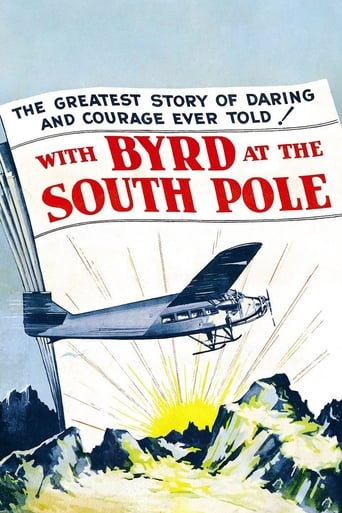



A Major Disappointment
This movie was so-so. It had it's moments, but wasn't the greatest.
View Morean ambitious but ultimately ineffective debut endeavor.
View MoreThere are moments that feel comical, some horrific, and some downright inspiring but the tonal shifts hardly matter as the end results come to a film that's perfect for this time.
View MoreNarrated by Floyd Gibbons. Directed and photographed by JOSEPH T. RUCKER and WILLARD VAN DER VEER. Polar flight commentary narrated by Floyd Gibbons. Titles: Julian Johnson. Film editor: Emanuel Cohen. Music score: Manny Baer. Song, "Back Home", by Irving Kahal, Sammy Fain and Pierre Norman.Copyright 12 July 1930 by Paramount Publix Corp. New York opening at the Rialto, 19 June 1930. U.S. release: 28 June 1930. Sydney release at the Prince Edward, 24 October 1930 (ran 2 weeks). 8 reels. 7,411 feet. 82 minutes.SYNOPSIS: Documentary of Admiral Byrd's 1928-1930 polar expedition.NOTES: Academy Award for Cinematography (defeating one of the most impressive line-ups in the entire history of this Award: Arthur Edeson's All Quiet on the Western Front; William Daniels' Anna Christie, Tony Gaudio and Harry Perry's Hell's Angels and Victor Milner's The Love Parade).Voted into 7th position, in The Film Daily annual poll of U.S. film critics.COMMENT: A meticulous but slow-moving account of Byrd's expedition. True, the photography, doubtless executed under terrible conditions, has its moments of grandeur, but the film as a whole is too long, too repetitive, too static, too familiar to hold the interest of a present-day audience for 82 minutes.
View MoreIn the days of the high living Roaring 20s one of the heroes of the age was Admiral Richard E. Byrd. His two polar flights like Lindbergh's across the Atlantic stirred the adventurous spirit in us all. Unlike Lindbergh he never got the adverse publicity of questionable politics, nor suffered an overwhelming tragedy like the kidnapping of a son.Byrd, of the one of the oldest of American families, the Byrds of Virginia was in that order a naval officer and a scientist as well. The expedition to the South Pole and the establishment of the first Little America base was for science and exploration and not conquest. After a couple of centuries one of the more hopeful signs about mankind is that the occupation and exploration of Antarctica is being done cooperatively.Every expedition to the Antarctic had Byrd establishing a base camp that he named Little America. The last he was on established a permanent one. The one you see them constructing was a temporary shelter for the expedition members and was taken down and abandoned after the expedition left as were the others until the fifth and last one.This was the first documentary to win any kind of Oscar recognition and it was for cinematography. The shots of the men, the sled dogs and the penguins, whales, and seals and all interacting with each other were wonderful. But I suspect that the film got the recognition it did also for the sheer difficulty of filming in such a hostile environment. That usable footage came back at all was itself a miracle.Admiral Byrd and the men who went with them were some of the best and brightest in America at the time and real heroes. Glad we have this Oscar recognized chronicle of what they did.
View MoreA few nights ago, my wife and I found ourselves talking about family problems at 3am. Sleep seemed impossible, so we went to the TV to find a more soothing mood. And there, on TCM, we found "With Byrd at the South Pole. Byrd stood nervously before the camera, stiffly, nervously trying to communicate the scope and dangers of his mission. The nervousness was in stark contrast to his absolute sure-handed, calm planning and control in the most trying circumstances.We marveled at the thoroughness and foresight of his planning, his concern for the safety of his crew--no one died on the mission, despite blizzards, crevasses, 4 straight months of no sunlight,and icy , treacherous footing, with temperatures reaching -72 F.Most outstanding was the Oscar-winning cinematography, unself-consciously artistic and breathtaking. We often wonder, watching adventure films, how cameramen somehow manage to be on a mountain peak before the climbers, wrestling heavy, awkward burdens of cameras, film and tripods. In this documentary, the visual thrills are endless and revelatory.One of the most interesting aspects of the film is the quiet dignity, humanity and willing work of the 42 trekkers. There is no evidence of complaining,a quiet competency and absolute dedication to hard work.There is a moving episode as a lead dog, overcomes illness and infirmity in a heartbreaking attempt to stay with the sled dog teams.This film is less "dramatic" than Flaherty's epics, but totally involving in terms of our emotional involvement.Find this film gem if you can...it's unforgettable.
View MoreOscar winning documentary on Byrd at the Antarctic and his attempt to be the first to fly over it.This beautifully shot record of what Byrd had to do to be the first man to fly over the South Pole is the type of film that sucks you in and hold you for its entire running time. If you want to know what it was like to be one of the first people to explore the bottom of the world this is for you. To be certain others were there first Roald Amundsen, Scott and Shackleton were all there first, but Byrd was still there when there were no permanent facilities and a trip to the ice was a years long adventure. This is amazing stuff (even if some of it seems staged). If there is any real flaw its that the flight to the Pole is almost anti-climatic when compared with just trying to survive.It should noted that the film is mostly silent. Sound film was really just taking off when the expedition was taking off, and even so the sound equipment would never have passed the weight restrictions. What sound there is comes from an introduction by Byrd, sound effects, and some narration during the actual flight.Recommended. (More so if you've seen the footage of Ernest Shackleton and his ill fated trip since this adds to your knowledge of what it must have been like for them as well)
View More